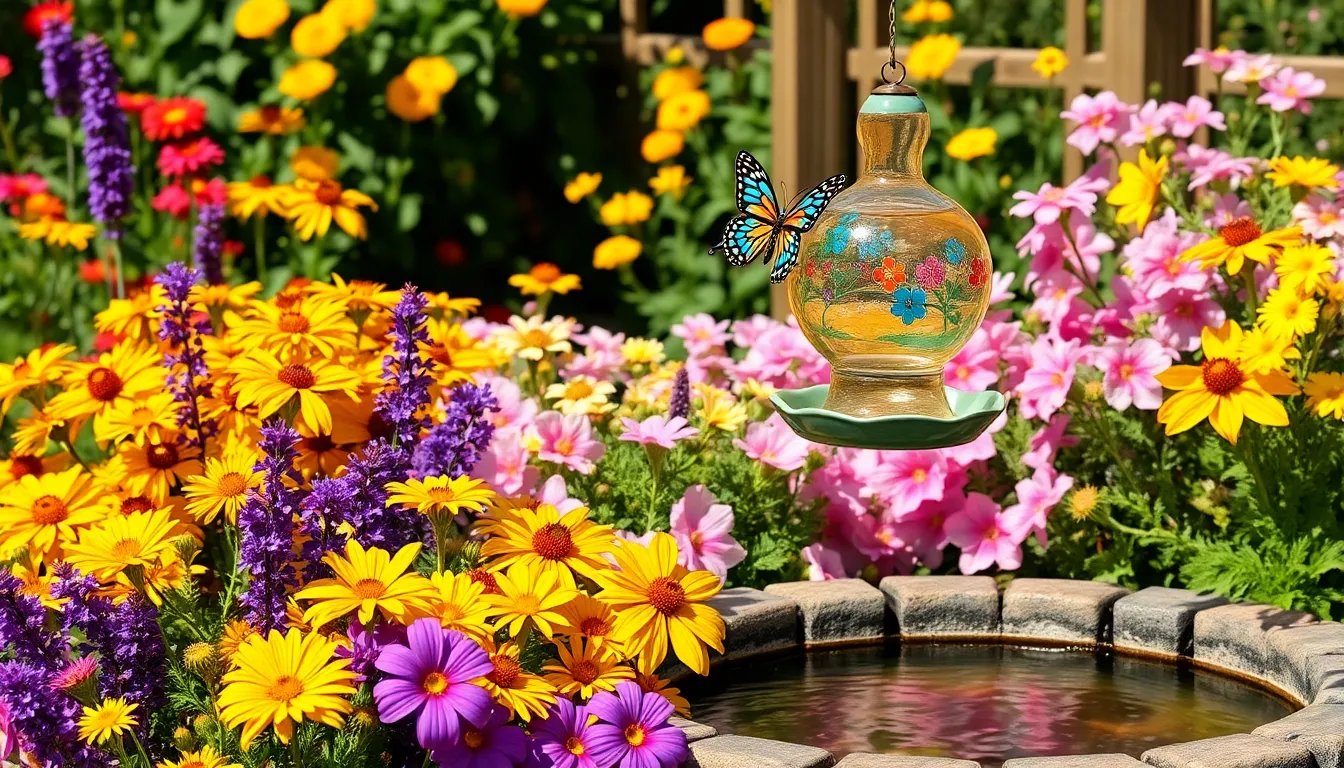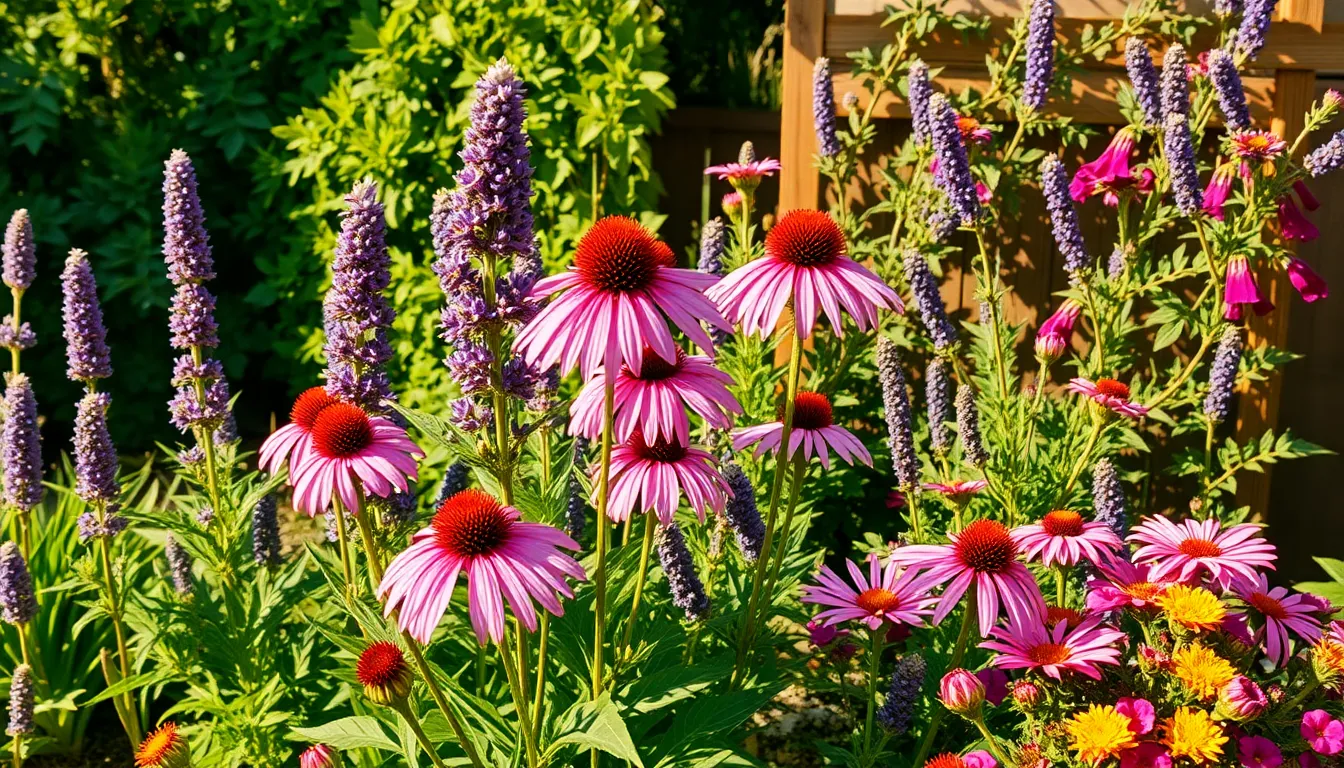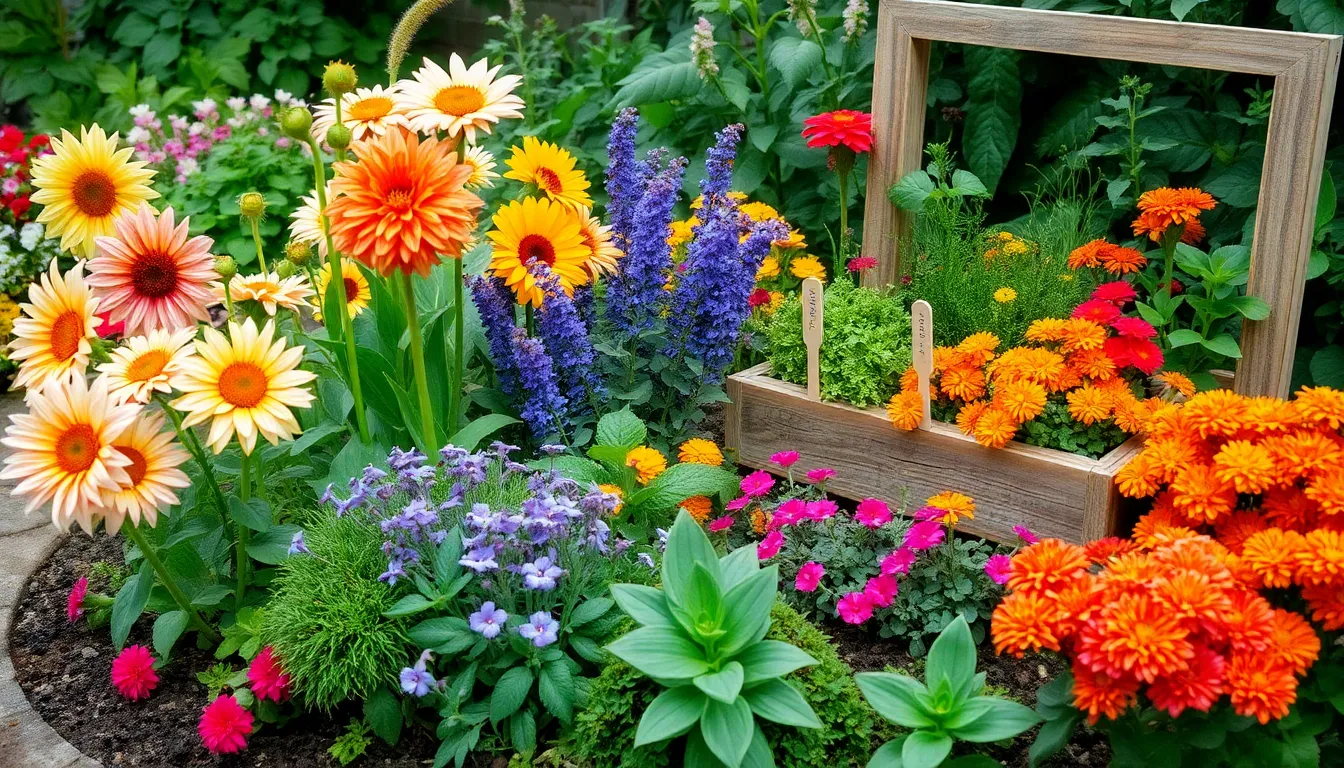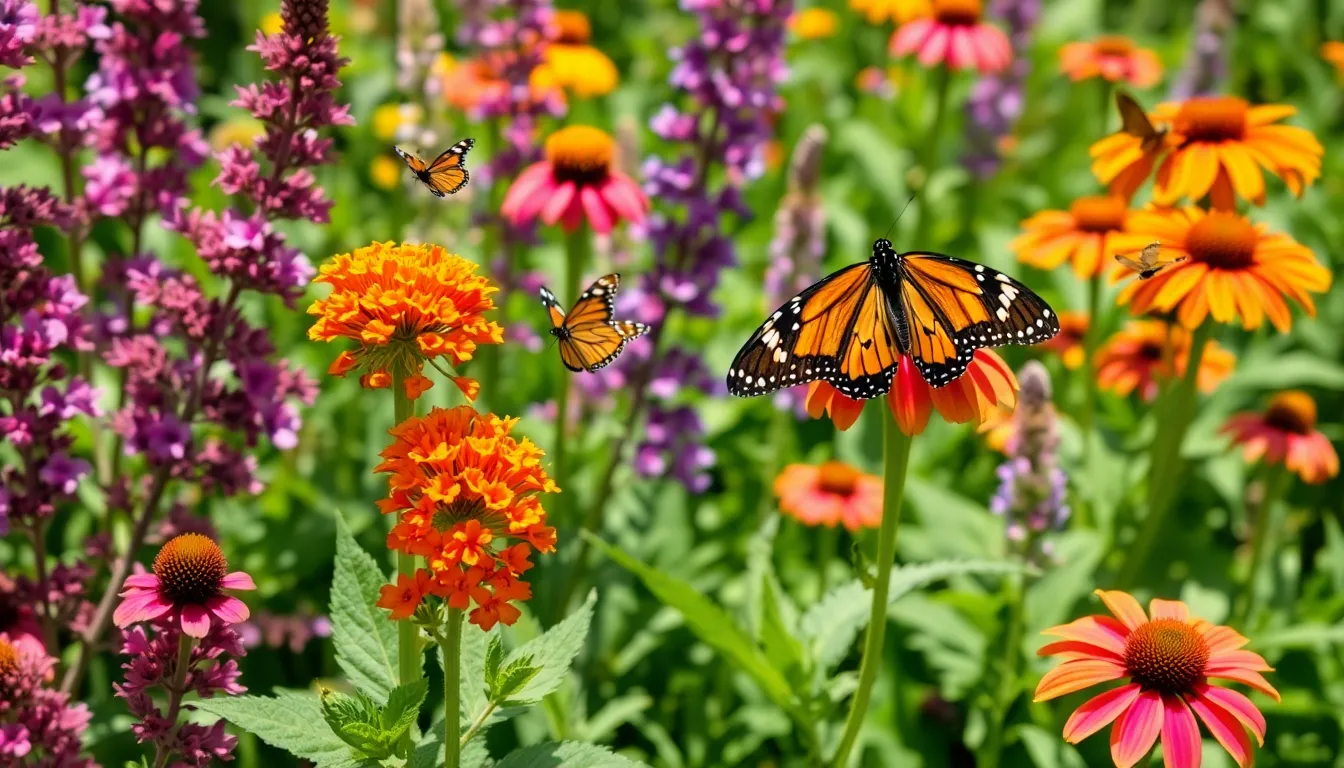Imagine stepping into your garden and being greeted by a kaleidoscope of butterflies dancing among vibrant blooms—an enchanting sight that gardeners of all levels can create with a bit of thoughtful planning. Whether you’re just planting your first seeds or nurturing a well-established garden, a butterfly haven can transform your outdoor space into a lively and colorful sanctuary.
Creating a butterfly garden isn’t just about beauty; it’s about nurturing a delicate ecosystem and supporting biodiversity right in your backyard. In this article, you’ll discover 11 essential elements that will help attract and sustain butterflies, from choosing the right nectar-rich flowers to providing vital host plants for caterpillars.
You’ll learn practical tips and expert advice to ensure your garden becomes an inviting oasis for these graceful pollinators. By the end, whether you’re a green-thumbed veteran or a budding enthusiast, you’ll have the knowledge to cultivate a beautiful, butterfly-friendly environment that will thrive for seasons to come.
Choosing Butterfly-Friendly Plants
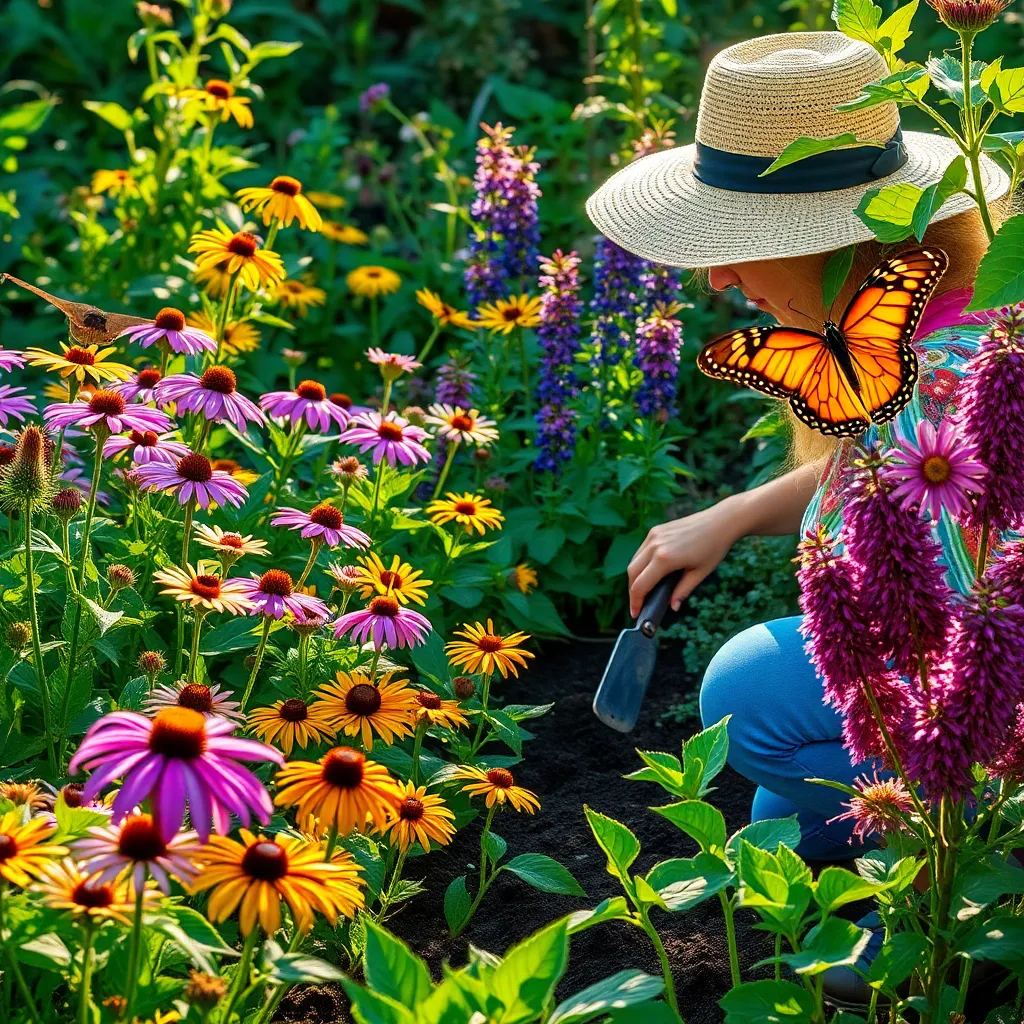
To create a butterfly-friendly garden, start by selecting a variety of nectar-rich plants that bloom throughout the growing season. These plants provide essential food sources for butterflies, ensuring they return to your garden year after year.
Consider incorporating native plants, as they are typically well-adapted to local climates and soil conditions, reducing maintenance needs. Native species like milkweed, coneflower, and black-eyed Susan are not only attractive to butterflies but also support their entire lifecycle.
For optimal growth, plant these butterfly-friendly species in well-draining soil enriched with organic matter, such as compost. Ensure your garden receives at least six hours of sunlight daily, as most butterfly-attracting plants thrive in full sun conditions.
Water your plants deeply but infrequently to encourage deep root systems that can withstand drought conditions. During particularly dry spells, a thorough soaking once a week is usually sufficient, depending on your local climate and soil type.
Essential Nectar-Rich Flowers
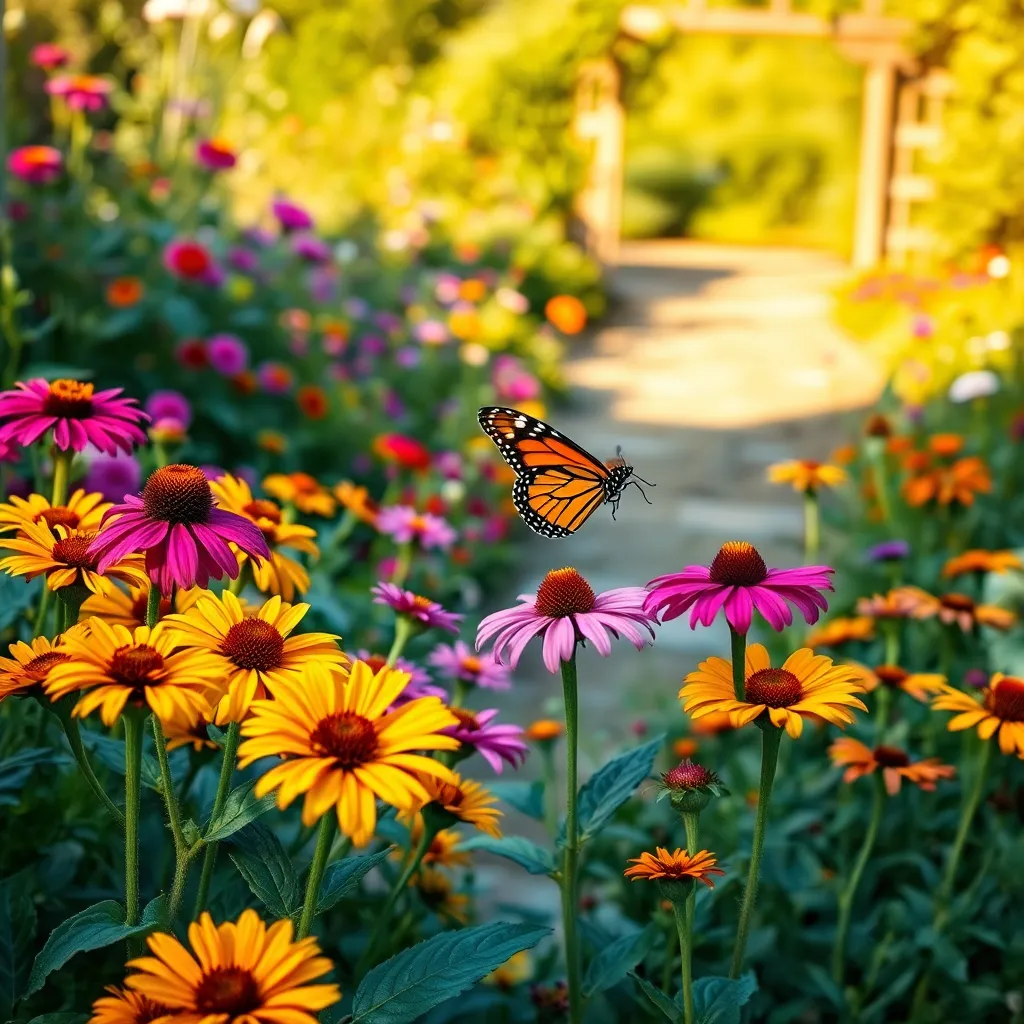
For a thriving butterfly garden, incorporating essential nectar-rich flowers is a must. These plants provide the necessary nutrients for butterflies, making them frequent visitors to your garden.
Start by planting Buddleia, commonly known as Butterfly Bush, which is a favorite among butterflies. This plant thrives in well-drained soil and requires full sun to produce its vibrant blooms, which attract a variety of butterfly species.
Consider adding Verbena to your garden, which is both beautiful and beneficial. Verbena prefers a sunny location and tolerates drought once established, making it an easy-care option for both novice and experienced gardeners.
Another excellent choice is Lantana, known for its bright and varied colors that butterflies love. Plant Lantana in a sunny spot with well-draining soil, and be sure to prune it regularly to encourage bushy growth and more flowers.
To further enhance your garden, mix in some Milkweed for its dual role as a nectar source and a host plant for Monarch butterflies. Milkweed needs plenty of sunlight and does well in sandy or loamy soil, making it versatile for different garden settings.
For more variety, include Salvia, which offers long-lasting blooms and is a magnet for pollinators. Ensure Salvia is planted in full sun and well-draining soil; regular deadheading will promote continuous flowering throughout the season.
Incorporating these nectar-rich flowers will not only beautify your garden but also create a thriving habitat for butterflies. With these easy-to-care-for plants, you’ll enjoy a lively and colorful butterfly garden all season long.
Host Plants for Caterpillars
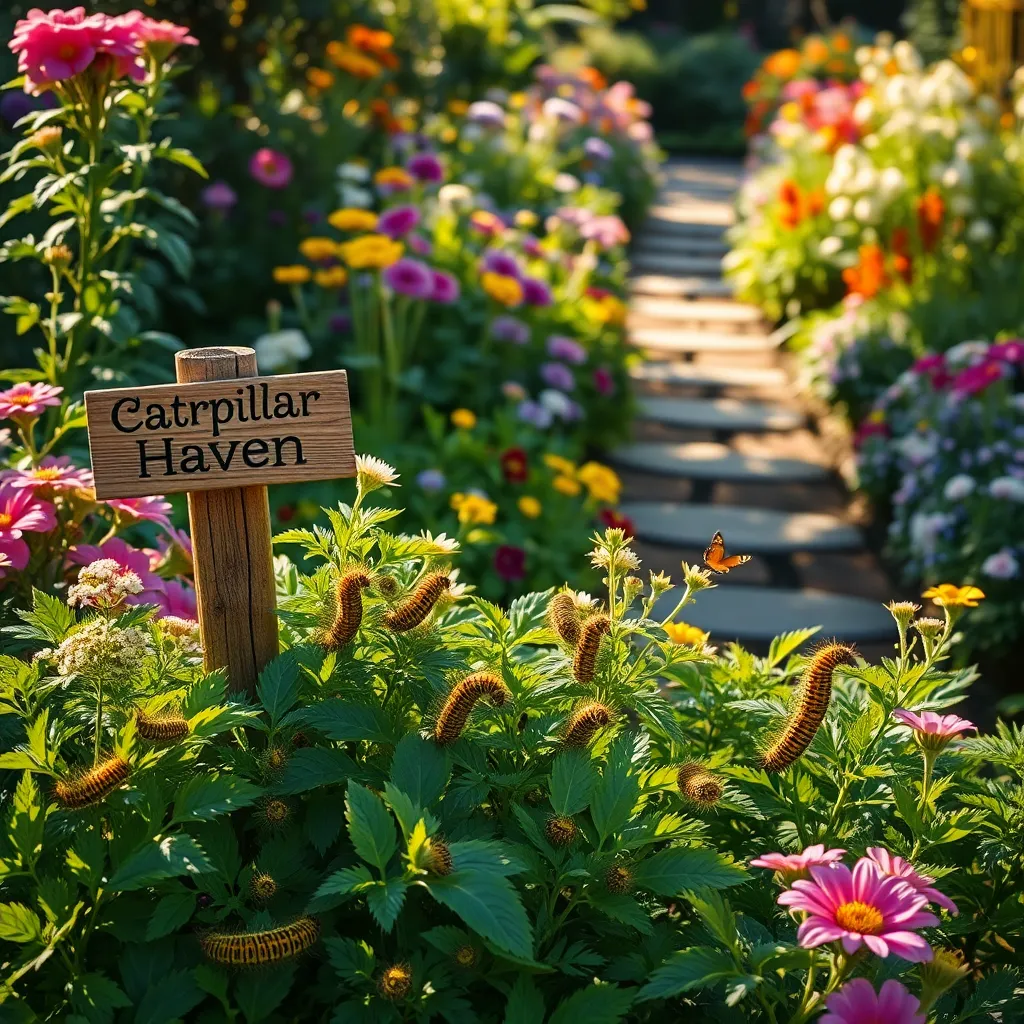
Host plants play a crucial role in attracting butterflies, as they provide essential food for caterpillars. Consider planting milkweed, a favorite for Monarch caterpillars, which thrives in well-drained soil and full sun.
Swallowtail butterflies are particularly drawn to dill, parsley, and fennel, making these herbs excellent choices for your garden. These plants are not only attractive to caterpillars but also easy to grow in moderate to full sunlight and can even thrive in containers.
To ensure your host plants are healthy, regular watering is essential, especially during dry spells. However, avoid overwatering as this can lead to root rot; a good rule of thumb is to water when the top inch of soil feels dry.
Experienced gardeners might opt to plant a variety of host plants to attract different butterfly species, enriching their garden’s biodiversity. A mix of native plants like violets for fritillary caterpillars can add beauty and ecological value, requiring partial shade and moist soil conditions.
Creating a Safe Habitat
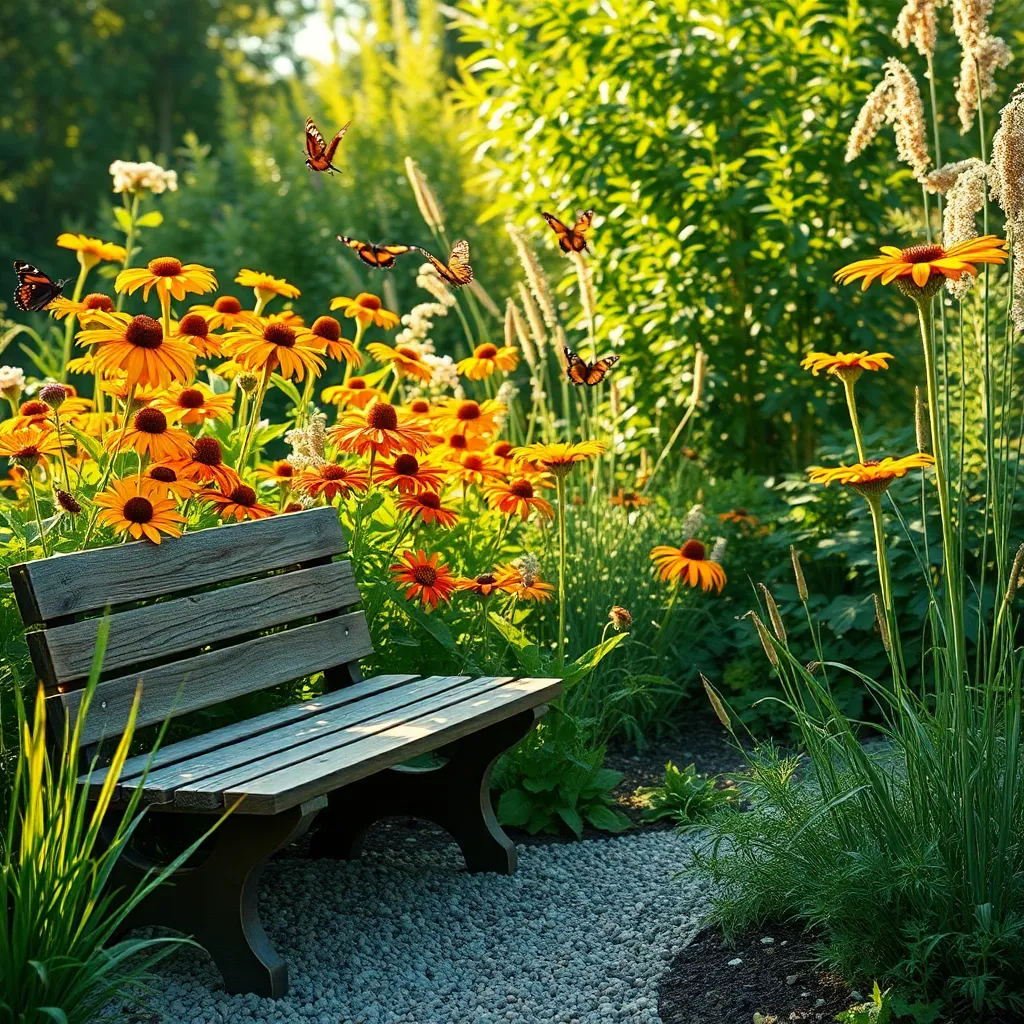
Attracting butterflies to your garden isn’t just about planting the right flowers; it’s also crucial to create a safe habitat. Start by ensuring your garden is free from pesticides, as these chemicals can harm butterflies and their larvae. Use natural pest control methods like introducing ladybugs or using neem oil, which are safer for the plants and beneficial insects.
Provide shelter by incorporating a mix of shrubs, grasses, and trees. These plants offer protection from harsh weather conditions and predators, creating a more welcoming environment for butterflies. Consider planting butterfly bushes or milkweed, which serve dual purposes as both host and shelter plants.
Water is another essential element in a butterfly-friendly habitat. Construct a simple butterfly puddling area by filling a shallow dish with sand and moistening it daily. This provides a place for butterflies to drink and absorb essential minerals, enhancing their survival and your garden’s vibrancy.
In addition to food and water, butterflies need a sunny spot to bask, as they are cold-blooded and need warmth to fly. Maintain areas in your garden that receive ample sunlight throughout the day, such as open spaces with flat stones or bare soil. This encourages butterflies to linger, ensuring a bustling, colorful garden scene.
Providing Water Sources
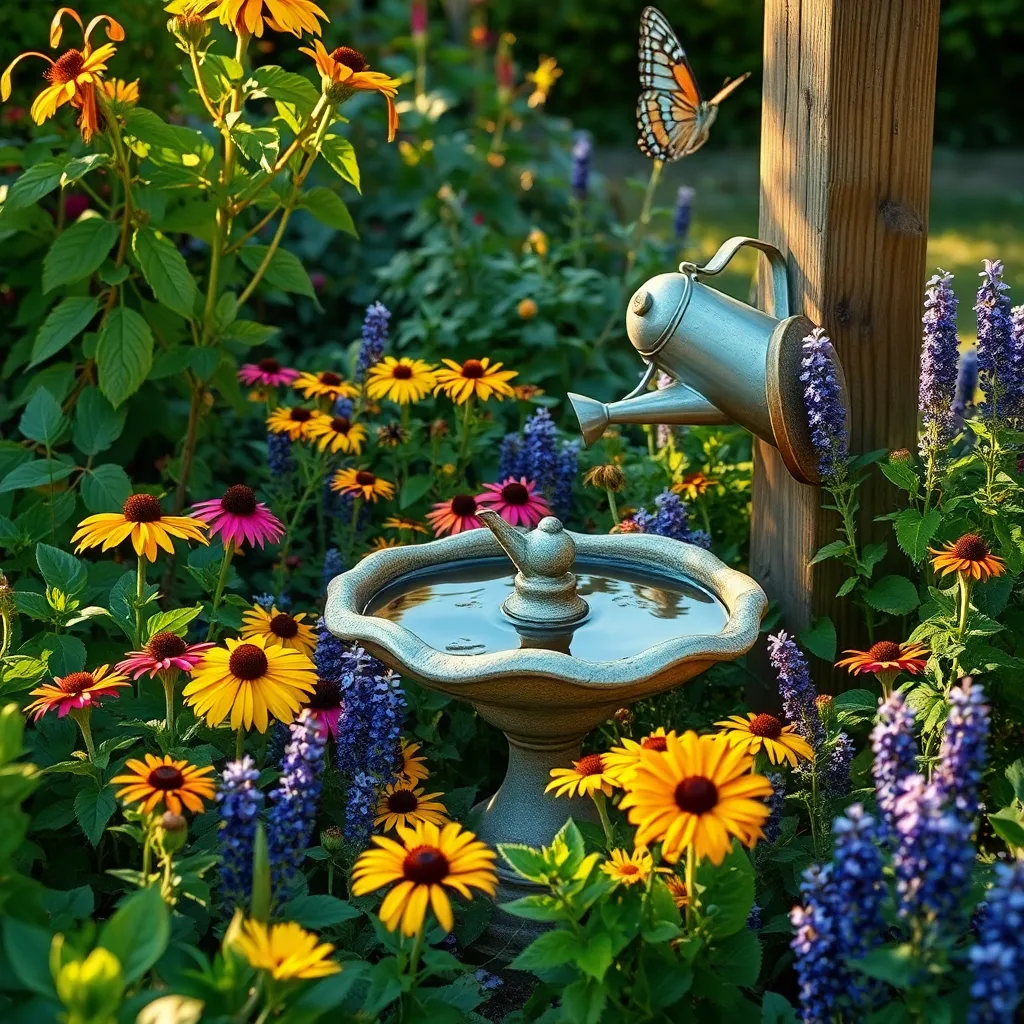
Providing water sources in your butterfly garden is essential for attracting and supporting these delicate creatures. Butterflies are not only attracted to nectar but also require water to stay hydrated and maintain their body temperature.
For beginners, a simple way to provide water is to create a shallow puddle or dish filled with sand and water. The sand acts as a landing pad for butterflies, allowing them to safely sip without the risk of drowning.
Advanced gardeners can consider installing a small pond or water feature. This not only adds an aesthetic appeal but also supports a wider range of wildlife, creating a more balanced ecosystem.
It’s important to ensure that the water source is kept clean and fresh to prevent the buildup of algae or mosquito larvae. Regularly topping up with fresh water and cleaning out debris will help keep your garden healthy and inviting for butterflies.
Incorporating Sunlit Spots
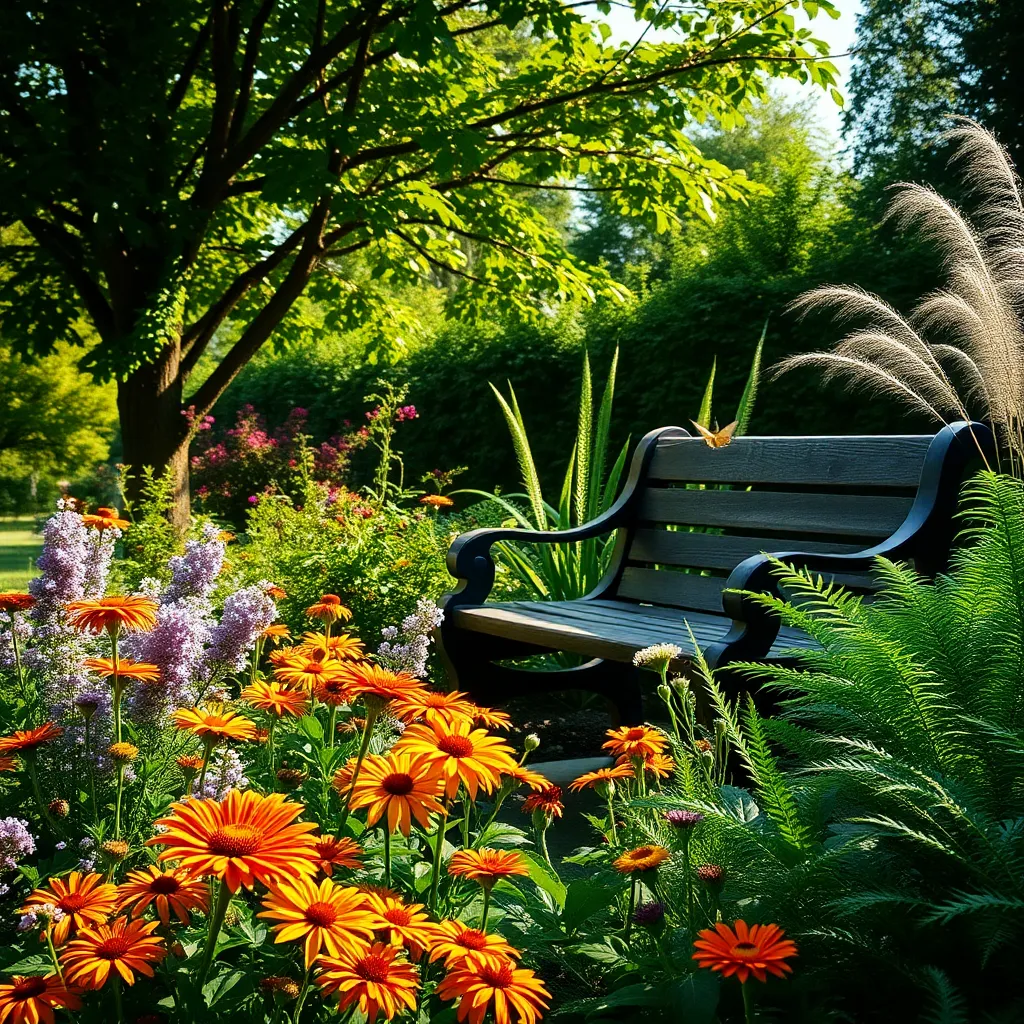
Strategically placing plants in sunlit spots is crucial for a successful butterfly garden. Butterflies are attracted to warmth, so ensure your garden receives at least six to eight hours of sunlight daily to encourage their presence.
Choose plants that thrive in full sun, such as milkweed and coneflowers, as these are both beneficial and attractive to butterflies. These plants need well-drained soil and should be watered consistently, but allow the top inch of soil to dry out between waterings to prevent root rot.
Position taller plants like sunflowers at the back of your garden to create a natural sun trap that enhances warmth and shelter for butterflies. For a more advanced approach, consider planting in raised beds to improve drainage and soil warmth, which can extend the growing season.
Use mulch to retain moisture and suppress weeds, ensuring your sun-loving plants aren’t competing for resources. Beginners should focus on adding a 2-3 inch layer of organic mulch, while experienced gardeners might experiment with using reflective mulch to increase sunlight intensity.
Avoiding Harmful Chemicals
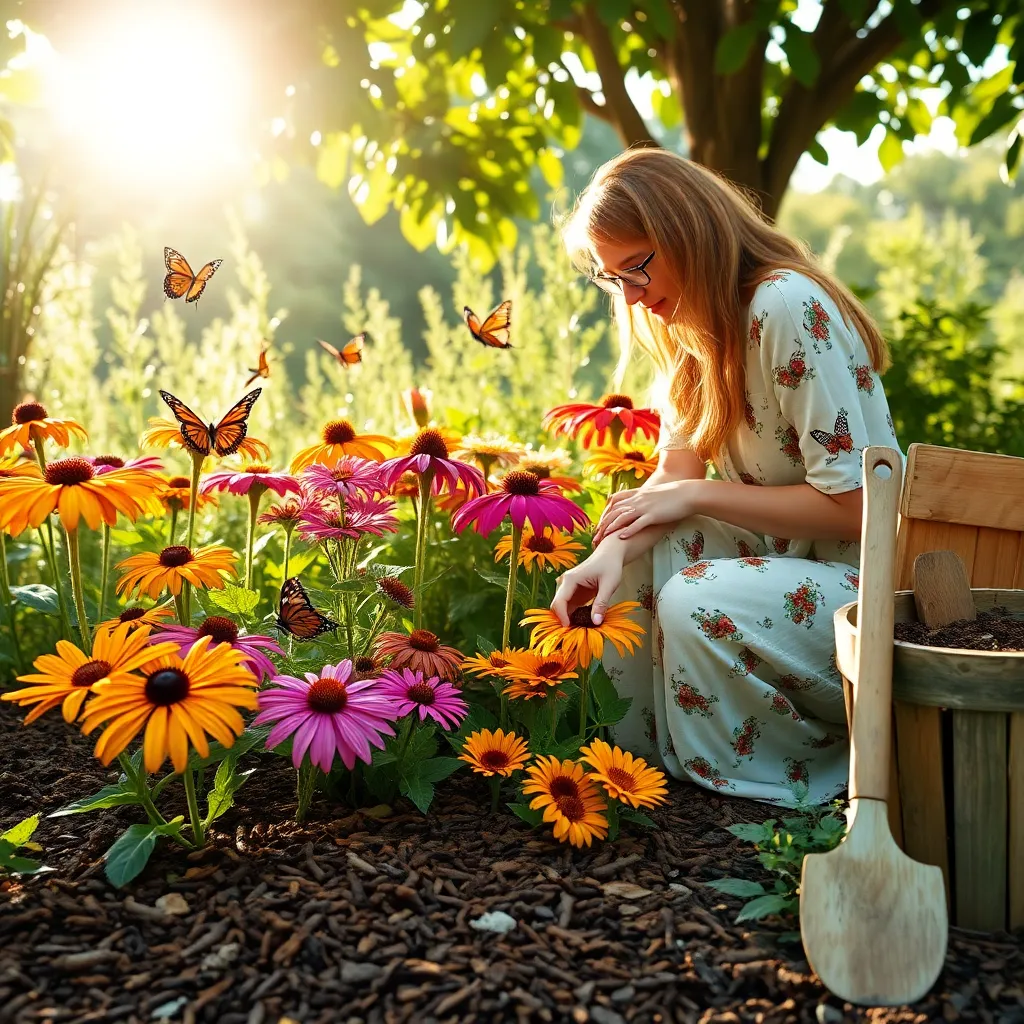
Creating a butterfly garden without the use of harmful chemicals is both beneficial to the environment and essential for attracting these delicate insects. Start by using organic compost to enrich your soil, promoting healthy plant growth without the need for synthetic fertilizers.
Consider natural pest control methods to maintain a healthy garden ecosystem. Introducing beneficial insects, like ladybugs and praying mantises, can help keep pest populations under control without resorting to chemical pesticides.
For weeds, try mulching with organic materials such as straw or wood chips, which suppresses weed growth while retaining moisture in the soil. Hand-pulling weeds regularly is another effective and chemical-free way to keep your garden tidy and inviting for butterflies.
Advanced gardeners might explore companion planting, which involves growing certain plants together to naturally deter pests and promote healthy growth. For example, planting marigolds alongside your flowering plants can repel nematodes, a common soil pest.
Adding Shelter and Protection
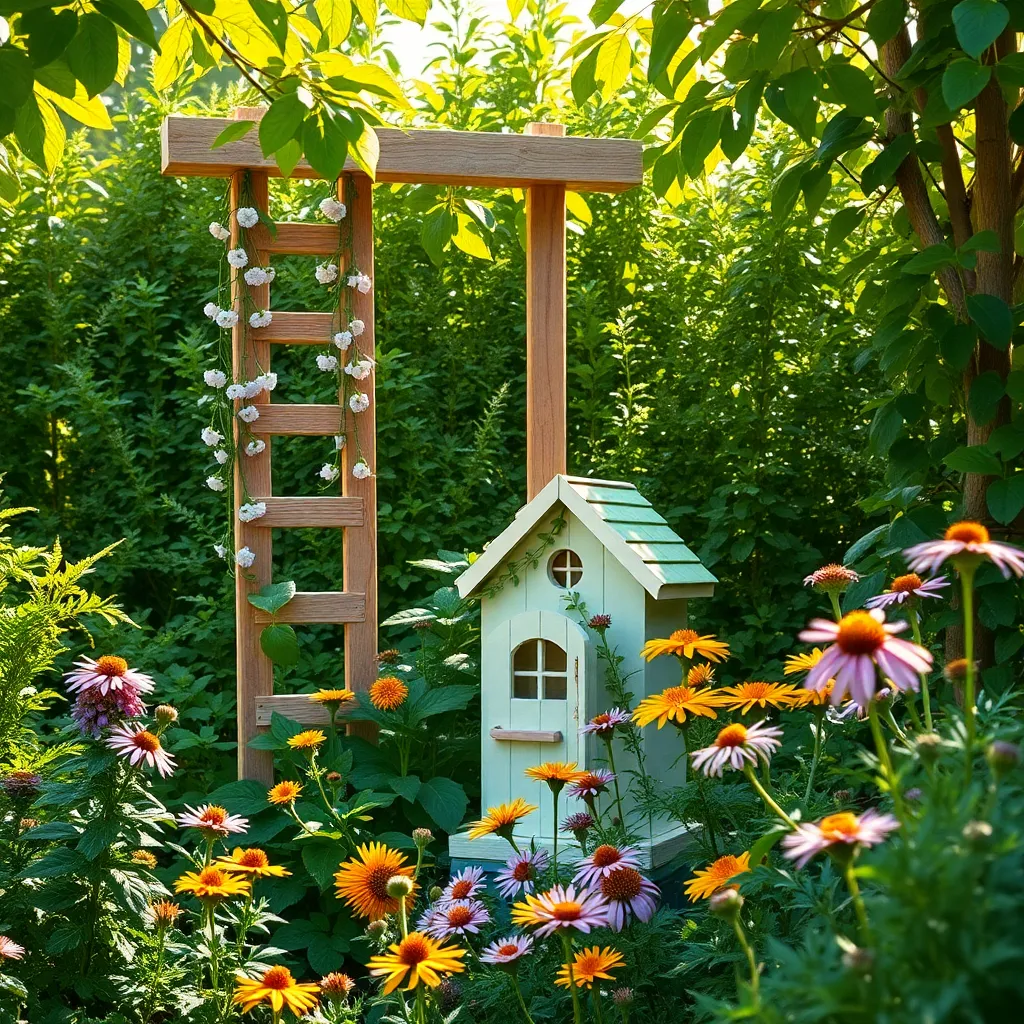
Creating a butterfly garden that thrives involves more than just planting flowers; providing adequate shelter and protection is essential. This can be achieved by incorporating elements like small shrubs, piles of rocks, or even a few strategically placed logs. These structures offer safe havens for butterflies to rest and escape from harsh weather conditions.
Incorporate a variety of native plants to create a natural habitat that attracts and shelters butterflies. Native shrubs not only provide cover but also offer a natural food source for caterpillars, supporting the entire lifecycle of butterflies. Consider plants like milkweed or spicebush, which are known to attract specific butterfly species and serve as host plants.
For a more advanced approach, construct a simple butterfly house to offer additional protection. Butterfly houses are easy to make and can be a fun DIY project that enhances your garden’s appeal. Place these shelters near nectar-rich plants to maximize their usage, ensuring they are accessible yet shielded from the wind.
Ensure that these shelters are placed in spots that receive some sunlight, as butterflies are cold-blooded and rely on the sun to warm up. Avoid placing them in areas that are too damp or shady, as these conditions can deter butterfly activity. Regularly check these shelters for signs of use and clean them as needed to maintain a welcoming environment.
Maintaining Seasonal Blooms
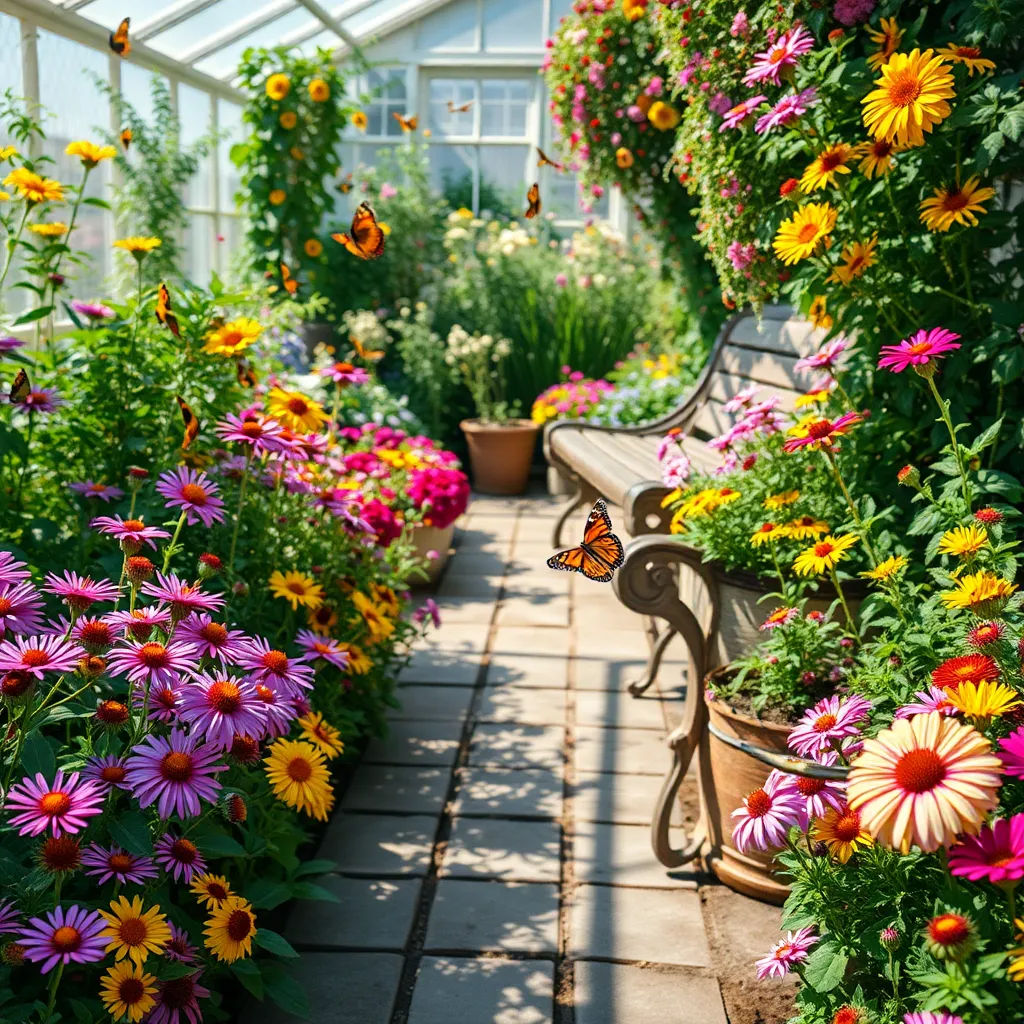
To maintain vibrant seasonal blooms in your butterfly garden, it’s essential to choose plants that thrive in your climate and soil type. Annuals like zinnias and marigolds can provide continuous color if planted in well-draining soil and fertilized monthly during their growing season.
Regular deadheading is crucial to keep your garden looking lush and to encourage more blooms. Use clean, sharp scissors or pruners to remove spent flowers, cutting back to a healthy set of leaves to promote new growth.
For gardeners seeking more advanced techniques, consider the practice of pinching back plants to encourage bushier growth. This involves removing the top growth of young plants, like cosmos and salvia, to stimulate the development of side shoots, resulting in a fuller plant with more blooms.
Watering practices also play a significant role in maintaining seasonal blooms. Ensure your garden receives about 1 inch of water per week, either from rainfall or supplemental watering, and focus on the base of the plants to prevent fungal diseases.
Introducing Companion Plants
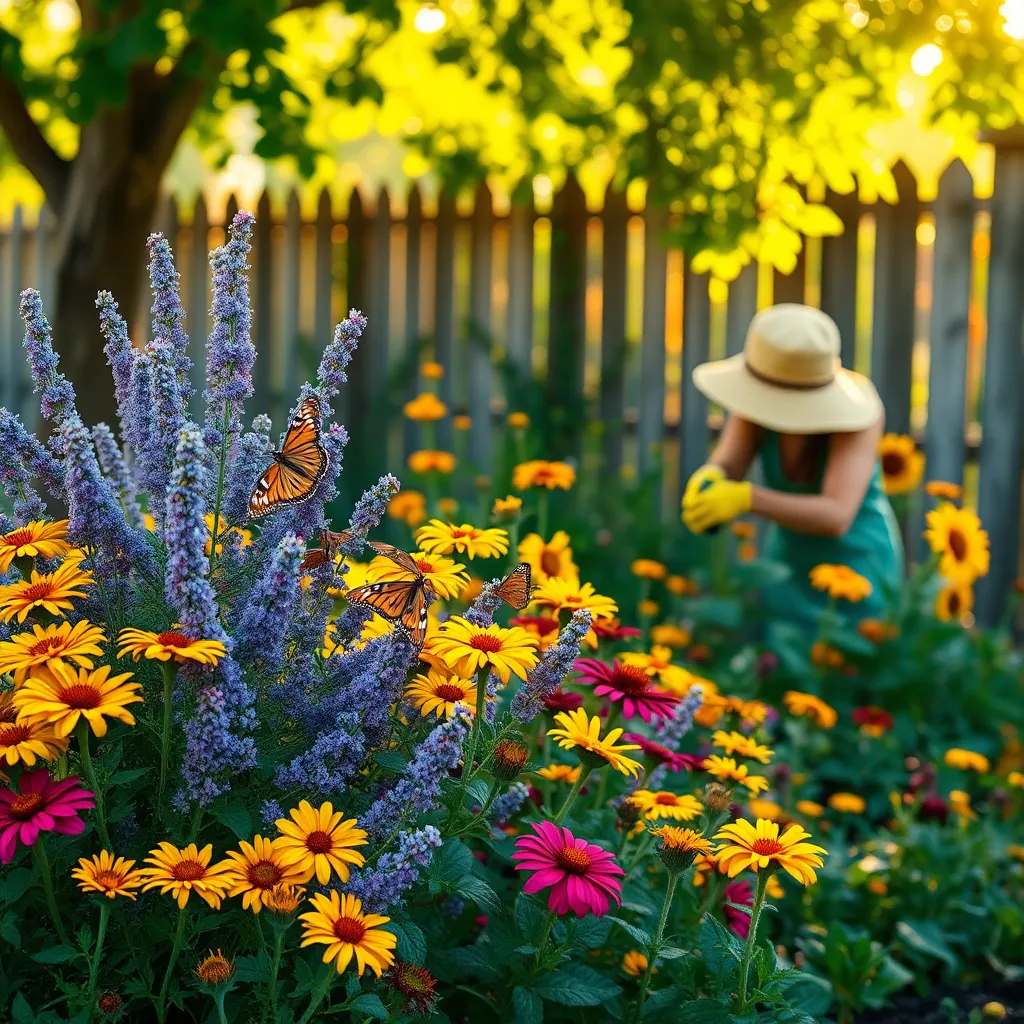
Companion planting can transform your butterfly garden by enhancing growth and deterring pests naturally. By strategically pairing plants, you can create a thriving ecosystem that attracts more butterflies while minimizing garden maintenance efforts.
Start by pairing nectar-rich plants like lavender with aromatic herbs such as rosemary to deter unwanted insects and encourage pollinators. Both plants thrive in well-draining soil and full sun, making them ideal companions in various climates.
Consider introducing marigolds alongside your butterfly favorites like zinnias to naturally repel nematodes and other pests. Water these companions moderately, allowing the top inch of soil to dry out between waterings to prevent root rot.
Another effective combination is milkweed with salvias, which provides essential habitat for butterflies and beneficial insects. Ensure they are planted in a sunny spot with fertile, loamy soil to promote robust growth and continuous blooming.
Monitoring Garden Health Regularly
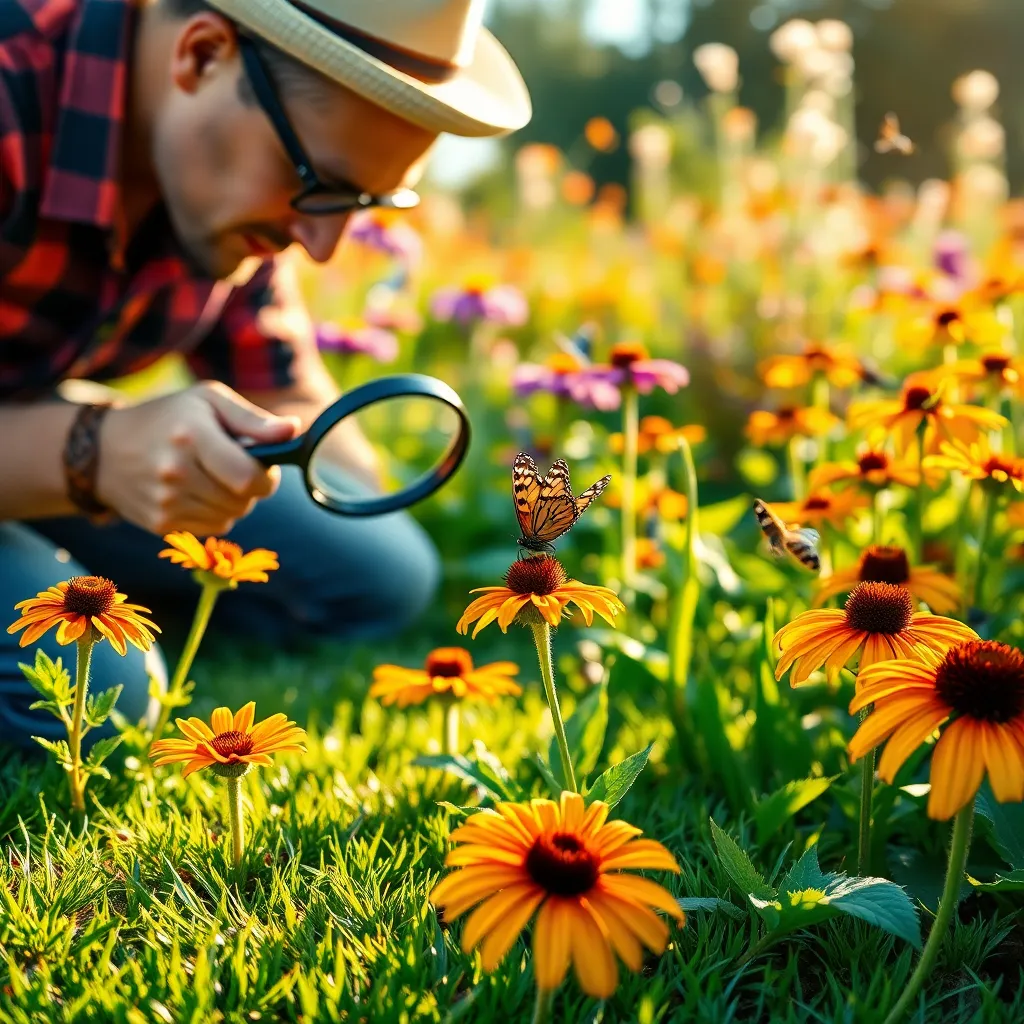
Regularly monitoring your garden’s health is essential for maintaining a vibrant and thriving butterfly habitat. By keeping a close eye on your plants, you can catch and address potential issues early, preventing them from becoming major problems.
One practical tip is to check your garden weekly for signs of disease or pests. Look for common symptoms like yellowing leaves, wilting, or unusual spots, and take action immediately to address these issues.
In addition to visual inspections, ensure that your garden is receiving the right amount of water. Most butterfly-friendly plants prefer moist but well-drained soil, so adjust your watering schedule based on rainfall and temperature.
For more advanced gardeners, consider testing your soil’s pH and nutrient levels at least once a year. This will help you determine if your plants are getting the nutrients they need and if any amendments are necessary to support optimal growth.
Conclusion: Growing Success with These Plants
In exploring the ’11 Beautiful Butterfly Garden Essentials,’ we’ve unearthed the vibrant parallels between nurturing a garden and cultivating a thriving relationship. We’ve touched on the importance of planting seeds with kindness, fostering growth with patience, and creating a diverse ecosystem with open communication. Just as a garden needs sunlight, relationships flourish with shared joy and understanding. We also highlighted the need for regular maintenance through conflict resolution and the value of celebrating blooming moments together.
To immediately enhance your relationship, take a moment today to express gratitude for something your partner has done recently—it’s a small act that can yield significant positive energy. And remember, relationships, like gardens, require ongoing attention and care.
As you embark on this journey of love and growth, be sure to bookmark this article for future reference. It will serve as a helpful guide whenever you need a reminder of how to keep your relationship vibrant and resilient.
Looking ahead, with dedication and mindfulness, your relationship can become a flourishing haven, much like a beautiful butterfly garden. Embrace the journey with confidence and watch as your love story blossoms.

